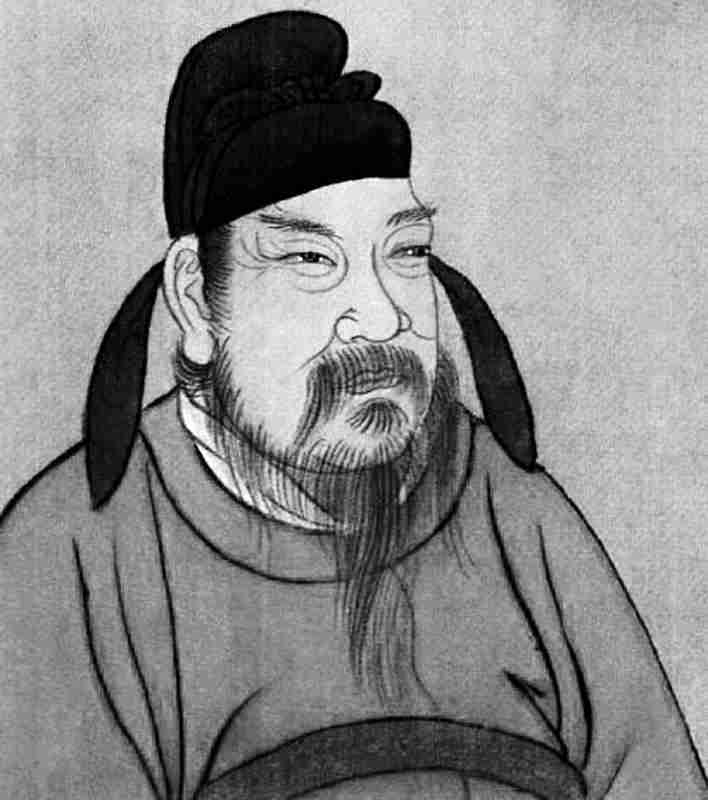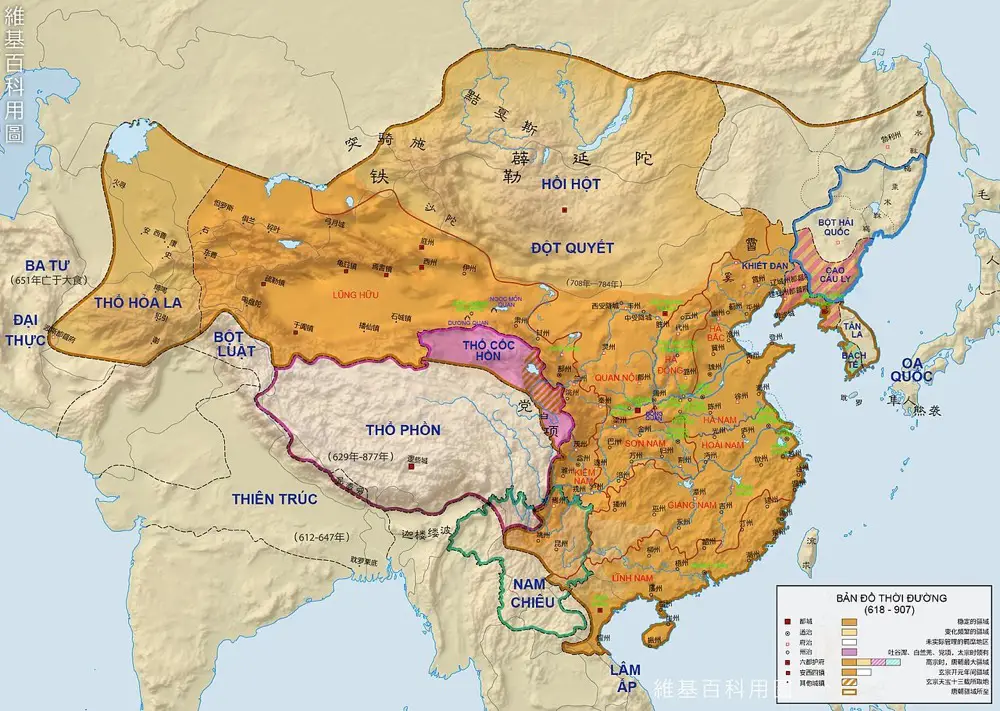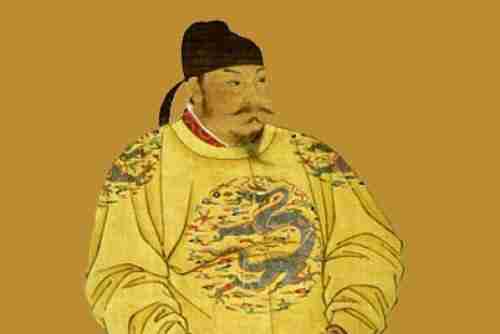The Tang Dynasty was a pivotal era in Chinese history, renowned for fostering the illustrious Tang culture and standing as a representative of Chinese civilization. During this period, China witnessed economic prosperity reaching its pinnacle, accompanied by monumental achievements in culture and the arts. However, the establishment of the Tang Dynasty was not without its challenges; it emerged after numerous wars and political struggles.
Prior to the Tang Dynasty’s inception, China underwent a period of fragmentation with regional warlords vying for power and engaging in mutual conflicts. The Li family, during this time, held significant political and military prowess but did not immediately overturn the Sui Dynasty’s rule. Instead, they adopted a gradual strategy of weakening the Sui regime’s power. Through protracted political and military strife, they ultimately realized the goal of establishing the Tang Dynasty.
Why did Li Yuan establish the Tang Dynasty?
Firstly, political factors played a pivotal role in Li Yuan’s decision to establish the Tang Dynasty. Towards the end of the Sui Dynasty, pervasive political corruption and widespread discontent led to continuous uprisings, weakening the Sui authority. In this context, Li Yuan believed that overthrowing the Sui Dynasty and founding a new dynasty was crucial to salvaging the country from turmoil and stabilizing the political situation. Thus, through extensive political and military struggles, he achieved the establishment of the Tang Dynasty.

Secondly, economic factors were instrumental in Li Yuan’s decision. Before the Tang Dynasty’s establishment, China experienced severe economic downturns during its fragmented phase, with warlordism causing hardship for farmers and substantial disruptions in commerce and handicrafts. The Li family held vast territories and numerous followers in the Guanzhong region, controlling commerce and handicrafts near Jinyang. Hence, they possessed considerable economic strength. After establishing the Tang Dynasty, Li Yuan implemented various economic policies that stimulated agricultural, handicraft, and commercial development, ultimately improving people’s living standards and strengthening the nation’s economic prowess.
Thirdly, military factors were critical in Li Yuan’s establishment of the Tang Dynasty. In the waning years of the Sui Dynasty, warlords’ factions engaged in frequent conflicts, weakening the realm. Li Yuan gradually weakened the Sui Dynasty’s power through extended political and military confrontations, amassing substantial military forces and resources. After the Tang Dynasty’s establishment, Li Yuan continued expansionist military policies, conquering regional warlords and unifying the nation, providing the foundation for long-term stability and development.
Fourthly, personal ambitions also contributed to Li Yuan’s decision. As a prominent warlord in the Guanzhong region, Li Yuan possessed political and military acumen. He harbored great aspirations for power and leadership within the country. Amidst the turbulent political climate of the Sui Dynasty’s decline, Li Yuan perceived an opportunity to fulfill his ambitions by establishing the Tang Dynasty. Through astuteness and courage, he successfully overcame obstacles, realizing his goal of founding an important dynasty in Chinese history.
In summary, Li Yuan’s decision to establish the Tang Dynasty was multifaceted, driven by political, economic, military, and personal ambitions. These factors interacted and complemented each other, culminating in the establishment of the Tang Dynasty. Despite facing challenges during its inception, Li Yuan’s wisdom and courage enabled him to overcome barriers, successfully founding an essential dynasty in Chinese history.
The Process of Establishing the Tang Dynasty by Li Yuan
Li Yuan’s political astuteness and acumen were pivotal in establishing the Tang Dynasty. Through close ties with Sui Dynasty officials, he gradually amassed significant political resources and power. During the turbulent final years of the Sui Dynasty marked by societal unrest and uprisings, Li Yuan seized the opportunity, initiating an uprising in Taiyuan. He captured Chang’an, enthroned Yang You, Sui Yangdi’s grandson, as emperor, and assumed the position of Chancellor, wielding actual power. To achieve his political goals, Li Yuan employed various tactics, including suppressing opposition, weakening local warlords, and implementing the imperial examination system, gradually consolidating his rule.

Secondly, military preparations and strategic decisions were instrumental in establishing the Tang Dynasty. Li Yuan prioritized building and training the army from the onset of the uprising. Through various means, he recruited talent, enhancing the army’s combat capability and discipline. In protracted political and military struggles, Li Yuan employed flexible tactics and strategies, including dividing the enemy, striking separately, and surprise attacks, gradually weakening the Sui Dynasty and local warlord forces. After establishing the Tang Dynasty, he continued expansionist military policies, subduing regional warlords and unifying the nation.
Thirdly, economic policies and measures played a significant role in establishing the Tang Dynasty. Li Yuan emphasized economic development during the Tang Dynasty’s inception, implementing a series of economic policies. These included alleviating the burden on farmers, encouraging commercial and handicraft development, and fiscal reforms. These policies stimulated agricultural, handicraft, and commercial growth, bolstering the country’s economic strength. Moreover, Li Yuan enacted land reforms that rationalized land distribution, sparking farmers’ productivity. These economic policies laid a solid foundation for the Tang Dynasty’s long-term stability and development.
Additionally, Li Yuan’s personal qualities and charisma were crucial in establishing the Tang Dynasty. Possessing foresight, decisiveness, courage, and adeptness in employing talent, he accurately analyzed situations, seized opportunities, and employed suitable strategies to achieve his goals. He placed significant emphasis on nurturing and utilizing talent, spotting and promoting exceptional individuals to maximize their contributions. His charismatic leadership and talent-recognition attracted numerous capable individuals, collectively striving to establish the Tang Dynasty.
In conclusion, Li Yuan’s establishment of the Tang Dynasty resulted from multifaceted factors converging, including politics, military, economics, and personal qualities. These factors synergistically propelled the establishment and development of the Tang Dynasty. Throughout this process, Li Yuan showcased remarkable political acumen, military prowess, and economic foresight, emerging as an outstanding leader in ancient Chinese history.
With whose help did Li Yuan establish the Tang Dynasty
During the establishment of the Tang Dynasty, Li Yuan received significant assistance from several individuals, among whom the most crucial were Pei Ji and Liu Wenjing.
Pei Ji, a close friend of Li Yuan, entrusted him with 9,000 troops stationed in the Jinyang Palace when Li Yuan assumed the position of Taiyuan Garrison Commander. This military force became pivotal in Li Yuan’s uprising against the Sui Dynasty. As Li Yuan advanced towards capturing Chang’an, Pei Ji recruited numerous talents, significantly bolstering Li Yuan’s strength. After the Tang Dynasty’s establishment, Pei Ji was honored as the Right Chief Minister of the Imperial Secretariat, serving as one of Li Yuan’s key advisors.
Liu Wenjing was one of the planners behind Li Yuan’s uprising in Taiyuan. He proposed the idea of rebellion to Li Yuan and provided analysis on the prevailing situation in the realm. During the uprising, Liu Wenjing actively contacted various regional warlords, seeking their support. He also personally negotiated with the Tujue (Turks), securing several thousand elite soldiers and warhorses, which played crucial roles in Li Yuan’s establishment of the Tang Dynasty.

In addition to Pei Ji and Liu Wenjing, Li Yuan’s second son, Li Shimin, also played a significant role in establishing the Tang Dynasty. Li Shimin displayed remarkable military talents, leading troops to conquer and pacify separatist forces like Wang Shichong and Dou Jiande, contributing significantly to the unification of the Tang Dynasty. He also participated in political decision-making, providing essential support for the establishment of the Tang Dynasty.
Regarding the adversaries defeated during the Tang Dynasty’s establishment
Turks: Initially, the Turks frequently raided the borders, plundering resources and abducting people. Through multiple wars, the Tang Dynasty defeated the Turks, securing the frontiers.
Regional Warlords: Before the Tang Dynasty’s establishment, various warlords such as Wang Shichong and Dou Jiande held significant power across China. Li Yuan and his son Li Shimin waged several wars, gradually subjugating these regional warlords and unifying the nation.
Peasant Uprisings: During the decline of the Sui Dynasty, numerous peasant uprisings occurred, including notable ones like the Wagang Army. The Tang Dynasty engaged in multiple conflicts with these peasant uprisings, ultimately quelling them.
In summary, during the establishment of the Tang Dynasty, they emerged victorious in numerous battles against adversaries including the Turks, regional warlords, and peasant uprisings. These triumphs in various wars provided crucial support for the Tang Dynasty’s establishment and consolidation.
In which year was the Tang Dynasty established
The Tang Dynasty was established in the year 618, marking a significant milestone in Chinese history. Its establishment signified the onset of the renowned Five Dynasties—Tang, Song, Yuan, Ming, and Qing—becoming a hallmark of Chinese culture.
The backdrop of the Tang Dynasty’s establishment can be traced back to the late Sui Dynasty. At that time, due to corruption and political turmoil, the Sui Dynasty plunged the country into chaos and division. Various regional warlords held sway in different regions, engaging in mutual conflicts and causing widespread suffering among the populace. Against this backdrop, the Li family, particularly Li Yuan, held extensive lands and numerous followers in the Guanzhong region. They controlled commerce and crafts near Jinyang, possessing considerable economic strength. Li Yuan believed that only by overthrowing the Sui Dynasty and establishing a new dynasty could the country’s peril be averted, and political stability be restored.
Subsequently, amidst the political upheaval during the late Sui Dynasty, Li Yuan initiated an uprising in Taiyuan, captured Chang’an, and enthroned Yang You, the grandson of Emperor Yang of Sui, as the emperor. Li Yuan appointed himself as the Grand Chancellor, gaining actual power. However, the establishment of the Tang Dynasty was not without challenges. He faced multifaceted hurdles but gradually weakened the Sui Dynasty through prolonged political and military struggles while securing substantial military and war resources. After establishing the Tang Dynasty, Li Yuan continued a policy of military expansion, conquering regional warlords and unifying the nation.
The establishment of the Tang Dynasty had profound implications for Chinese historical development. It ended the period of fragmentation, uniting the country and laying the groundwork for economic development and cultural prosperity. During the Tang Dynasty, China witnessed the pinnacle of economic growth, accompanied by monumental achievements in culture and the arts. Tang poetry, a hallmark of Tang literary expression, not only flourished during the period but also exerted profound influence in subsequent eras. Furthermore, the Tang Dynasty implemented a range of political, economic, and cultural policies that facilitated the country’s advancement and progress.
In summary, the establishment of the Tang Dynasty held significant historical significance. It marked a pivotal milestone in Chinese history, ushering in the era of the Five Dynasties—Tang, Song, Yuan, Ming, and Qing. The Tang Dynasty’s establishment laid the foundation for China’s unity and development while becoming a cultural representative of Chinese history.
Regarding the time taken by the Tang Dynasty to unify China
The Tang Dynasty took approximately seven years to achieve the unification of China.
The founder of the Tang Dynasty, Li Yuan, initiated the uprising against the Sui Dynasty in the midst of turmoil during the late Sui period. Eventually, in 618 AD, Li Yuan captured Chang’an, establishing the Tang Dynasty. Post the establishment, Li Yuan, along with his son, Emperor Taizong (Li Shimin), continued wars to unify the entire nation. They successively subdued regional warlords, peasant uprisings, invasions by the Turks, and others, achieving nationwide unification by 624 AD.
Specifically, in the initial years post-establishment, the Tang Dynasty stabilized its foundation by quelling regional separatist forces in Guanzhong. Subsequently, they launched campaigns eastward and westward, subjugating separatists in Shandong and Henan in the east and defeating Turk invasions in the west. Additionally, the Tang Dynasty pacified southern factions led by Xiaoxian and Dufuwei and northern powers commanded by Liu Wuzhou and Gao Kaidao. Throughout these wars, the Tang Dynasty showcased formidable military strength, culminating in the complete unification of the nation by 624 AD.
The process of unification for the Tang Dynasty was protracted and complex, involving multiple wars and political struggles. The Tang Dynasty demonstrated robust military, political acumen, and economic strength, ultimately achieving nationwide unification. The Tang Dynasty’s unification terminated over 30 years of division since the late Sui Dynasty, laying the groundwork for Chinese historical development.
In conclusion, the Tang Dynasty took approximately seven years to achieve the unification of China. This process, albeit lengthy and intricate, witnessed the Tang Dynasty’s establishment and subsequent unification through its robust military might, political sagacity, and economic prowess. The Tang Dynasty’s unification laid the foundation for China’s economic development, cultural prosperity, and holds a significant place in Chinese historical chronicles.
